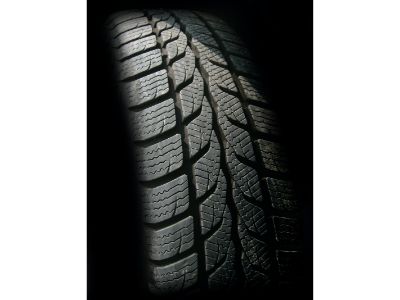Typical signs of wear and tear on your car and how to identify them
Replacing parts on your car can be expensive so here is a quick guide to knowing what can go wrong and how to maximise the lifespan of these parts.

Tyres
Your car’s tyres will legally need to be replaced if the tread depth is below 1.6mm however independent experts have proven that braking performance in wet weather conditions can deteriorate when the tread of the tyre has reached 3mm.
Tyres can be an expensive as well as being one of the critical safety features of your car, to maximise their lifespan the inflation pressure should be regularly checked in three places, the centre groove of the tyre, the outer and the inner groove.
Always have your wheels balanced as unbalanced wheels can lead to premature tyre wear. The first signs of unbalanced wheels are a vibration in the steering wheel which can cause wear of shock absorbers and struts.
Wheel alignment and tracking
The wheel alignment of a car refers to the direction the wheels point at rest, incorrect alignment can lead to uneven wear in the tyres which reduces fuel economy as well as handling and safety.
Hitting a pot hole or kerb can knock the alignment out and damage the steering and suspension parts. Look out for an off-centre steering wheel, uneven wear on your tyres or the car pulling to one side.
Steering and Suspension system
A car’s ride and handling characteristics are determined by the steering and suspension system. The suspension includes the shock absorbers, coil springs and top mountain, these components interact with the steering system which includes the CV joint, suspension arm, track rod ends and steering rack to provide vehicle control.
These systems should work together to absorb the energy from any bumps or potholes in the road. Typical signs that these systems are not working include, excessive bouncing over road bumps, swerving, knocking noises and a vibration while braking or leaking shock absorbers.
Battery
Without the battery the car will not start. The battery stores electric energy which the starter converts to into a mechanical force to turn the engine on. The battery is recharged automatically providing your car’s alternator and drive belt are in good condition.
Over time the condition of the battery will deteriorate and it will no longer be able to hold its charge. The battery may need replacing if the lights on your car are dim or the check engine or battery light is on.
Exhaust System
The exhaust system improves the power output of your car, decreases fuel consumption, reduces the noise and protects the environment by removing dangerous gases from the engine. Regular short trips can increase wear and tear of your exhaust system as can road conditions such as bumps or salt.
Over time the exhaust system will deteriorate naturally. Things to look out for include a loud rattling noise when starting the car, accelerating or braking, sluggishness while driving and excessive rust or holes in the tailpipe.
Braking systems
One of the most important safety features of your car is the braking system. Hydraulic pressure in the master cylinder is created when you push the brake pedal which flows through hydraulic lines and hoses to the wheel cylinders and the callipers pushing the shoes against the drum brakes and the pads against the discs.
Look out for a red warning light on your dashboard, the car pulling to one side during braking, the brake pedal feeling spongy, a metallic noise when you are braking and longer stopping distances when braking.
Did you enjoy this blog post? |10 people found this review helpful



 Sign up for SPECIAL OFFERS
Sign up for SPECIAL OFFERS
